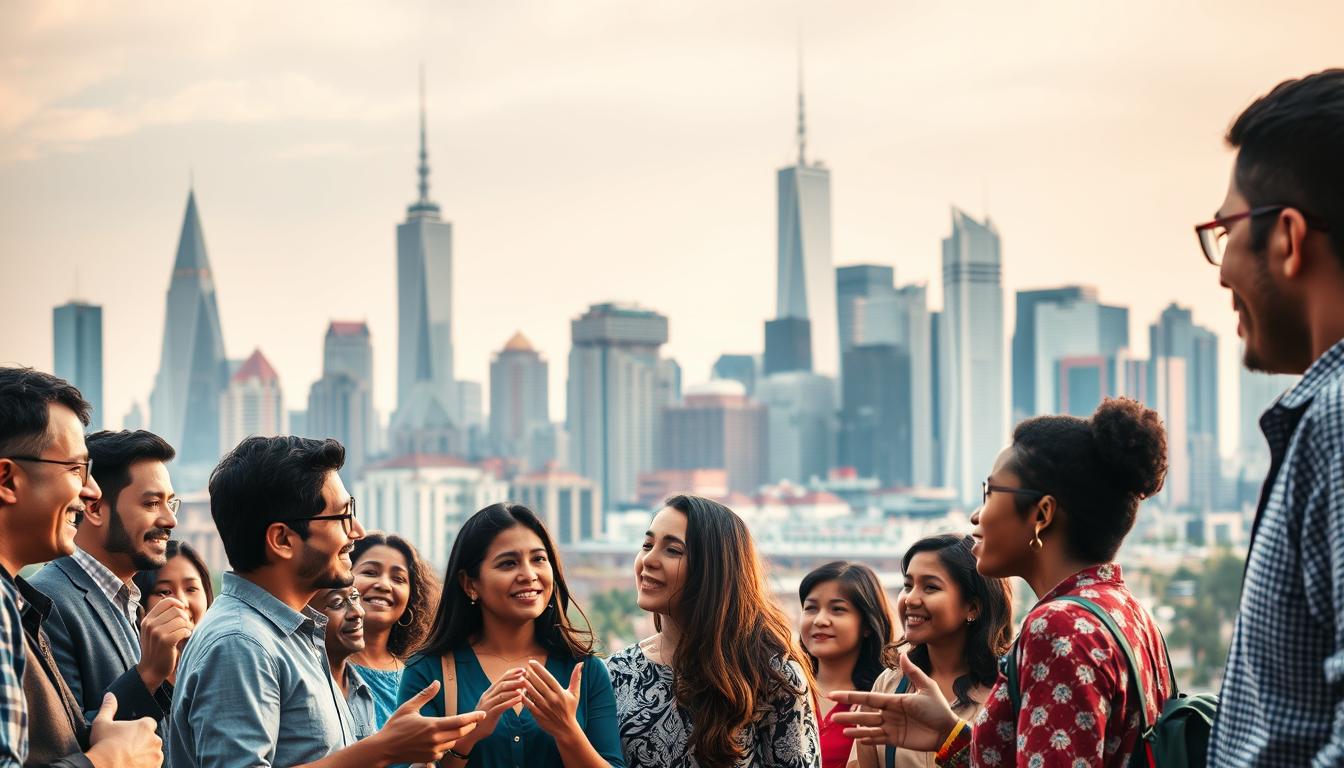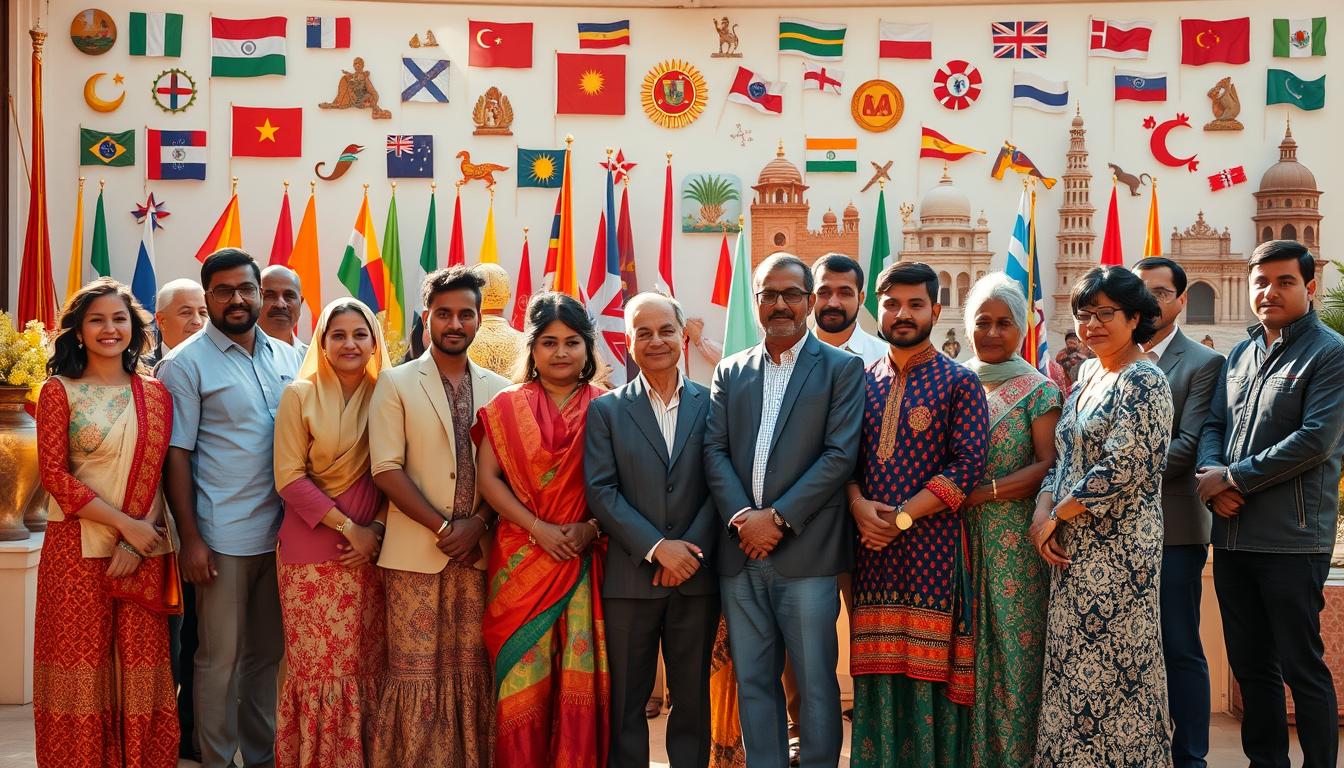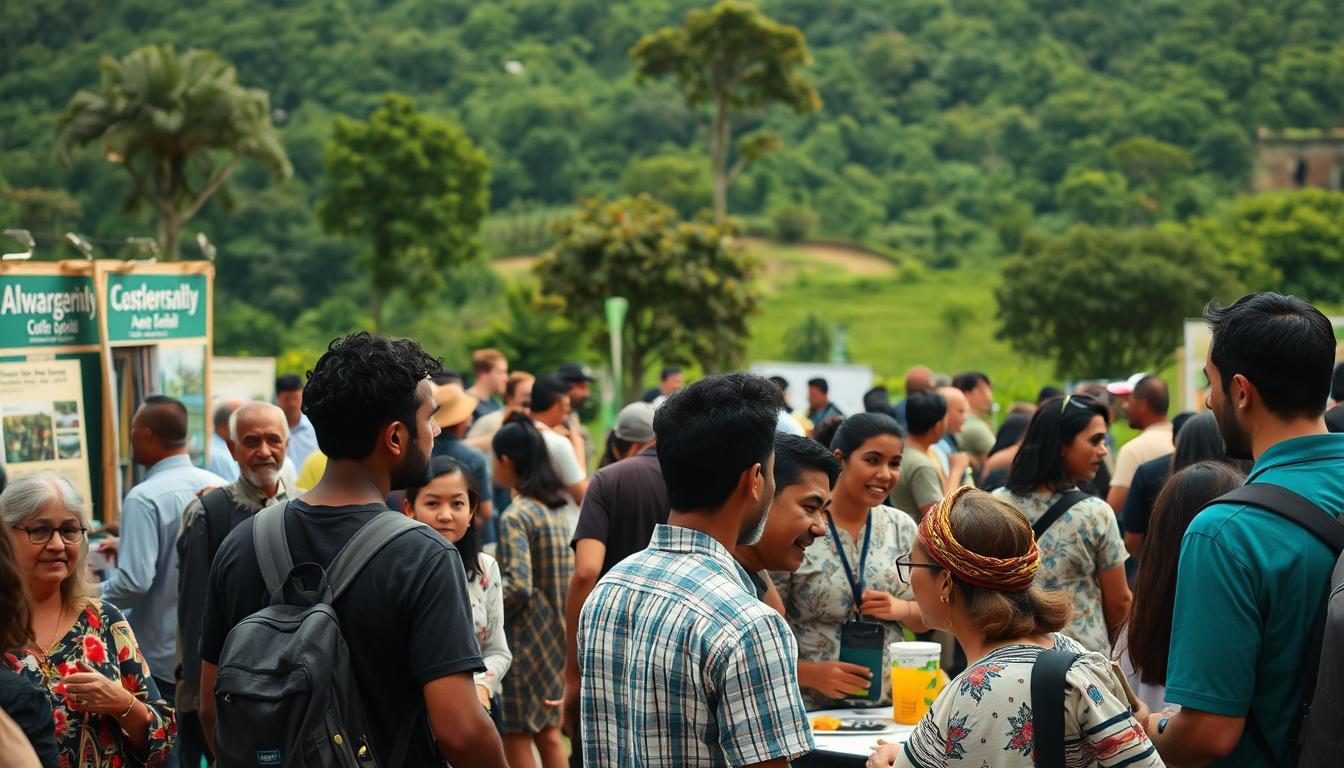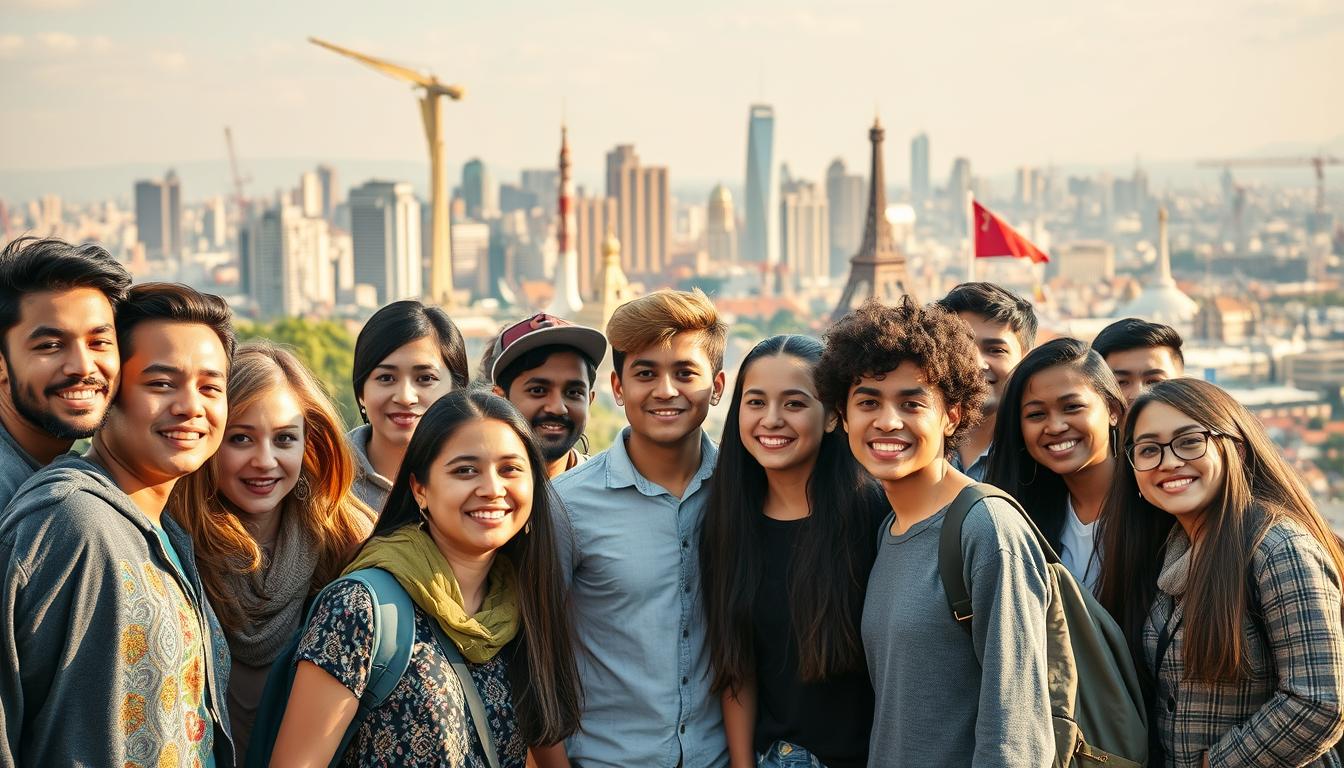Celebrating Diversity: Arts and Culture Exchange Programs for Creative Collaboration
In today’s world, cultural diversity is more important than ever. Arts and culture exchange programs are key for bringing diverse communities together. They celebrate the wide range of human expression and highlight the need for cultural understanding.
These programs help bridge cultural gaps. They foster cooperation in our interconnected world. This cooperation is crucial for our global community.
Overview of Arts and Culture Exchange Programs
Arts and culture exchange programs are key for understanding different cultures. They offer chances for cultural sharing and artistic collaboration. These programs help creatives share their cultural identities through art.
Definition and Purpose
These programs aim to boost global understanding and appreciation for various cultures. They bring together artists and cultural practitioners for sharing. This way, participants learn about their own culture and others, which is vital today.
Importance in Today’s Society
In today’s fast-changing world, these programs are more important than ever. They help keep cultural heritage alive and promote diversity. They also tackle social issues through art, helping communities come together.
People who take part in these exchanges gain new perspectives. They learn to respect and understand different cultures better.
Historical Context of Arts and Culture Exchanges
The history of arts and culture exchanges is filled with rich interactions. These interactions have shaped and changed the artistic world over time. By looking at how exchange programs have evolved, we see how artists have greatly influenced global conversations.
This history is marked by key moments in cultural exchanges. These moments have laid the groundwork for today’s cultural programs.
Evolution Through the Decades
Exchange programs started in the early 20th century. Artists began working together across borders, building understanding. The 1960s saw more government support for cultural diplomacy during the Cold War.
This support aimed to promote art and bridge political gaps. Later, the focus turned to inclusivity, bringing more diverse voices into exchanges. By the 2000s, technology started changing how artists collaborated and communicated.
Key Milestones in Exchange Programs
There have been many important moments in cultural exchanges. The 1980s saw the start of international art festivals. These festivals brought together different cultures, giving artists a global platform.
Government programs during key times have also played a big role. They helped improve relations between countries through art. Today, groups like the Asia Society work to deepen cultural understanding and connect artists globally. These moments not only add to the history of arts but also show the value of ongoing global artistic interactions.
The Role of Government and Nonprofits
Government support is key for the arts to grow and thrive. Nonprofit arts groups often get help from different funding sources. This support lets them run cultural exchange programs that bring people together and help us understand each other better.
Grants, sponsorships, and partnerships are big help. They let these groups reach more people and make a bigger difference.
Funding Sources and Support
There are many ways for nonprofit arts groups to get funding for cultural exchange. Some main sources are:
- Federal and state grants for the arts.
- Corporate sponsorships that help arts reach more people.
- Private donations that support special projects.
Working together, government and nonprofits help these groups keep offering valuable programs. These programs help with artistic expression and cultural diversity.
Examples of Successful Initiatives
There are many examples of successful cultural exchange programs. These show how well nonprofits and government work together. Some examples are:
- The National Endowment for the Arts (NEA) gives grants for artistic collaborations.
- Local arts councils focus on community projects that bring people together.
- International festivals celebrate global artists, creating a space for shared creativity.
These examples highlight the link between government support and the work of nonprofits. They show why ongoing funding for cultural exchange is so important.
Benefits of Participation in Exchange Programs
Arts and culture exchange programs offer many chances for growth and community betterment. They help people develop personally through art, improving their skills and understanding different cultures. These efforts have a positive impact on communities as a whole.
Personal Growth and Skill Development
People learn new things and artistic methods in these programs. They get to take part in workshops, exhibitions, and projects with others. This helps them:
- Be more creative and innovative.
- Improve their artistic skills by seeing different ways of creating.
- Understand and appreciate art from around the world better.
This personal development through art gives them new ways to express themselves. They can then make a bigger impact in their local arts scenes.
Building Global Networks
Exchange programs also help build lasting connections with other artists and cultural workers. These connections can lead to:
- Projects that involve artists from different countries.
- Sharing knowledge and resources, making the art world richer.
- More cultural understanding, leading to respect between different areas.
By global networking in arts, participants can grow their careers. They also help start conversations about art’s importance in society.
Diverse Disciplines in Arts and Culture Exchanges
Arts and culture exchanges show the wide range of creative expression worldwide. Each field adds its own view, making a rich mix that helps cultures understand and work together.
Visual Arts and Exhibitions
Visual arts are key in cultural exchanges. Artists share their work in global exhibitions. This lets both new and known artists reach more people.
Meeting different cultures helps artists grow and sparks conversations between them.
Performing Arts Opportunities
The performing arts, like theater, dance, and music, tell stories in a lively way. Artists from different places work together, improving their skills and sharing stories. This exchange leads to new and exciting art that goes beyond borders.
Literary and Culinary Exchanges
Literary exchanges share stories and promote books from all over. Writers and poets connect with readers in other countries, building bridges through words.
Culinary arts also play a big role, as chefs and food lovers explore and celebrate global dishes. These exchanges deepen our understanding of cultures through food and cooking.
Challenges Faced by Exchange Programs
Arts and culture exchange programs are key to international collaboration. Yet, they face many challenges that can slow them down. It’s important to tackle these issues to make artistic connections and understanding possible.
Cultural Barriers and Misunderstandings
Cultural misunderstandings are a big problem in these programs. Differences in traditions and communication styles can cause confusion. This can stop people from truly getting to know each other’s backgrounds and ideas.
By recognizing these cultural barriers, we can create a more welcoming space. This allows participants to form deeper connections.
Funding Limitations
Funding is another big challenge for arts exchange programs. Many rely on limited government or private funds. This can make it hard to meet the growing demand for artistic collaboration.
Projects often need careful planning and partnerships to find more resources. Overcoming funding issues is key to making these cultural exchanges successful and growing.
Highlighting Notable Exchange Programs in the U.S.
Art and culture exchange programs are key in building connections and understanding. In the U.S., the Fulbright Program is a leading example. It helps people learn about different cultures and share their own in a team effort.
The Fulbright Program
The Fulbright Program is known for its role in cultural dialogue. It allows artists, educators, and leaders to grow personally and professionally. They dive into new artistic scenes and work with people from other countries.
The National Endowment for the Arts Initiatives
The National Endowment for the Arts supports many exchange programs. It funds projects that bring artists together from around the world. These efforts show the value of shared cultural experiences and help people understand each other better.
Impact on Local Communities
The arts have a big impact on local communities. They help with cultural identity and economic growth. Arts programs bring back local traditions and customs.
These programs make people feel proud of their heritage. They also help communities accept diversity. This creates a strong sense of belonging.
Revitalization of Cultural Identity
Arts programs boost cultural identity. They let communities share their values and stories through art. Festivals, workshops, and exhibitions are great ways to do this.
These events help people understand each other better. They celebrate local art and traditions. This appreciation is key to keeping cultural heritage alive in a changing world.
Economic Benefits and Tourism
Investing in arts and culture brings economic benefits. Cultural events draw tourists, which helps local businesses. This creates jobs and boosts the economy.
Cities that support the arts often see a big change. They show off their cultural side, attracting tourists. The arts improve a community’s image and quality of life. This leads to long-term growth and stability.
Success Stories from Participants
Arts and culture exchange programs have led to many success stories. They show how artist collaborations and community projects can change lives. These stories highlight the power of creativity when different talents come together.
Artist Collaborations and Residencies
In cities around the world, artist collaborations have flourished. For example, emerging artists from different backgrounds joined a residency program. Together, they created a mural that captures the essence of their community.
These collaborations not only enrich the art scene. They also help participants understand each other better. Each artist brings their own unique view to the table.
Community Projects that Made a Difference
Arts and culture exchanges have sparked impactful community projects. One example is a local theater group that changed after participating in an exchange. They started workshops for underserved youth using drama and storytelling.
This project did more than just teach art. It gave young people a safe place to express themselves. It inspired them to share their own stories and experiences.
Future Trends in Arts and Culture Exchange Programs
The world of cultural exchange is changing fast. It’s moving towards new ideas and making sure everyone can join in. Technology is playing a big role, with online cultural exchanges becoming more popular.
These online programs let artists work together from anywhere. They help break down barriers and make it easier for more people to get involved.
Embracing Technology and Virtual Exchanges
Online cultural exchanges are changing the game. They bring together artists from all over, without needing to travel. This way, more people can see and share their art.
With technology, art can reach more people than ever before. It’s making the world of art more open and diverse.
Expanding Access to Underrepresented Communities
It’s important to make sure everyone can join in arts and culture exchanges. Some groups face big challenges, like not having enough money or feeling left out.
By focusing on inclusivity, we can make art more fair. This way, everyone’s voice can be heard, creating a richer cultural scene.
FAQ
What are arts and culture exchange programs?
Why are arts and culture exchange programs important in today’s society?
How have arts and culture exchanges evolved over the decades?
What role do governments and nonprofits play in supporting these programs?
What benefits can participants expect from these exchange programs?
What disciplines are involved in arts and culture exchanges?
What challenges do arts and culture exchange programs face?
Can you provide examples of notable exchange programs in the U.S.?
How do these programs impact local communities?
What are some success stories from participants in these programs?
What trends are emerging in the future of arts and culture exchange programs?
Published on: 28 de March de 2025

Luke Martin
Luke Martin, author of Credwallets.com, is a mathematics graduate with a specialization in financial markets. Known for his love of pets and his passion for sharing knowledge, Luke created the site to provide valuable insights into the complexities of the financial world. His approachable style and dedication to helping others make informed financial decisions make his work accessible to all, whether they're new to finance or seasoned investors.







